How to turn your second home into a third one. And fourth one. And fifth one…
By J.M. Stewart
There is a new kind of “key party” happening out there. Chances are, you already know someone who’s doing it. Hold on—it’s not what you think. The only things being swapped are the keys themselves. The Home Exchange industry has taken off in recent years, thanks to a combination of factors that have convinced thousands of vacationers to look at their vacation dollars in a completely different way.
 Technically, home swapping is nothing new. It has been around for a while. The basic idea is trading vacation time in your home for vacation time in someone else’s. This can be done in a few different ways with different types of properties. In most cases, however, owners of second homes are bartering unused time in their vacation properties for unused time in other people’s second homes. Who wouldn’t want to trade that sparsely used month at the Jersey Shore for a Paris apartment or a hilltop mansion overlooking the Caribbean?
Technically, home swapping is nothing new. It has been around for a while. The basic idea is trading vacation time in your home for vacation time in someone else’s. This can be done in a few different ways with different types of properties. In most cases, however, owners of second homes are bartering unused time in their vacation properties for unused time in other people’s second homes. Who wouldn’t want to trade that sparsely used month at the Jersey Shore for a Paris apartment or a hilltop mansion overlooking the Caribbean?
More than 20 home exchange companies have sprung up in the last two decades, which tells you some-thing about which way this industry is headed. Not coincidentally, during that same time the timeshare industry has cratered. A major reason for the rapid growth of home exchange clubs is the Internet, which enables home-swappers to peruse vacation properties, read personal reviews, and upload comments and photos of their own after each stay.
According to Steve Zacks, a principal at 3rd Home, a leader in the luxury segment that features over 1,700 residences with an average value of $2.25 million, “There is complete transparency in the program.” The company’s web site features comprehensive listings on each home, and guests are encouraged to write a review after each stay—which is then featured unedited on the property page and in the testimonials section.
There are three basic types of home exchanges:
- Hospitality Exchange You stay in someone’s home while the host is there. This might be in a spare bedroom—bed-and-breakfast style—or perhaps a guesthouse. It is an interesting budget option.
- Simultaneous Exchange This is when you literally switch homes—you’re in their home, and they’re in your home at the same time. Companies like IVHE Vacation Home Exchange, in England, function as facilitators. People who like this option find it interesting to vacation in a home filled with someone else’s personal belongings.
- Non-Simultaneous/Non-Direct Exchange You “pool” your vacation home availability with like-minded individuals and then pick the property you want to visit, at a time when you want to travel. It is not your responsibility to find someone who wants to trade with you. This type of service is offered by the elite-level home exchange companies. The vacation properties in pooled exchanges can be valued from $500,000 into the millions, and have club rules, regulations and controls in place to promote a consistent luxury experience.
SO, WHO’S STAYING IN MY HOME?
Good question. Luxury companies vet potential members through referrals and social networking. Every member must comply with the terms and conditions set forth in a company’s guidelines. Non-compliance can result in expulsion. But according to Zacks, “Members pay it forward. It is a private club. Our members, all of whom have their vacation homes in the program, treat each property they visit as if it were their own. Many have created new friends in the process
In less-exclusive simultaneous exchange situations, it is up to the homeowners to work things out. This involves a fair amount of personal contact—and also being comfortable with strangers occupying your primary residence. It’s not for everyone, but for some this is part of the adventure. As one happy swapper says, “When I talk to my exchange partners either on the phone or over the Internet, I just use my gut to get a sense of them. And, I take common-sense precautions, like putting our valuables in an off-limits room when people stay here. My family and I have been doing this for years now, and we’ve never had a problem.”
3rd Home is representative of the high-end home exchange companies in that it only handles second (or third, or fourth) homes. Love Home Swap, by contrast, will work with primary homes, which can involve some tricky logistics. Many companies do a little of both, including IVHE out of England. Others still, like Air B&B, can arrange a room swap. Needless to say, however you go, it is an economical way to travel because you are paying a tiny percentage of typical resort charges or house-rental fees
 THINKING LOCAL
THINKING LOCAL
There is an ancillary benefit of home exchange to surrounding economies: An empty home generates no revenue for nearby businesses, while a home occupied for a couple of weeks by a family that has saved a bundle in rental fees will be a big win for the local shops, restaurants and other tourism-reliant enterprises.
Business is booming in the non-simultaneous exchange sector. Among the many reasons for this growth is that a lot of people built or purchased second homes as investment properties during the real estate boom of the last decade, and now find themselves unable to resell, rent or use the homes as frequently as they had originally anticipated. Or perhaps they have had many years of enjoyment and now are ready for new experiences. Filling those homes with like-minded vacationers—while racking up credits for your own vacation adventures—makes sense. On the flipside, as the person doing the vacationing, you save thousands of dollars in a single trip, and can bring the entire family (and even a couple of friends) to boot. Indeed, in many parts of the world, you might be amazed to find vacation homes with between 5 and 10 bedrooms.
Depending on the company, the cost of vacationing in a fabulous home in an exotic locale averages between 5 to 10 percent of the rental cost were you to go through a local realtor on a short-term stay. In addition, all companies charge some sort of membership fee to be part of the program
POINT TAKEN
Trade to Travel and 3rd Home run on point systems. You get out of the program what you put in. For example, Trade To Travel requires a one-time-only initiation fee of$2,500, but if you make your home available right away (within the first six months of joining), this fee is waived. The more weeks you offer up your house—and the more often your home is used—the more points you accrue. These points are then “cashed in” for a trip. 3rd Home employs a similar kind of credit system that takes into account the value and location of your home, as well as the time of year the home is made available. A high season like Spring Break will garner more credits than a less in-demand time of year. One of the more appealing aspects of this arrangement is that homeowners begin racking up credits the moment unused blocks are deposited into the system, and thus can book their own vacations right away. It’s an economy unto itself.
Timing is everything, of course. If you are considering a home swap, it’s best to plan a trip to, say, Europe at least 3 or 4 months in advance, just to allow yourself the opportunity to pick from a greater variety of locations. Some of the choicest properties come off the board a year in advance. Remember that many of these homes are listed as vacation rentals with local realtors, and the owners of these homes still use them for their own vacation time, so it’s not just home-swappers vying for them. Most companies accept a one-week minimum visit to a home. One home exchange company reported a stay that lasted 6 months. Now, that’s a vacation!
When it comes to luxury properties, there are basically two distinct tastes among travelers. Some want the total residence-club experience, while the more adventurous prefer to go native and fly solo. No problem, several companies cater to both of these personalities. If you’re in the mood for a little pampering, but still want to live like a local, many vacation homes include a staff to cook and/or clean for you. And every home has some sort of local contact or caretaker to answer questions and deal with emergencies. Also, homeowners typically provide a long list of instructions and recommendations for their guests. For those who prefer the top-flight amenities a hotel offers, the higher-end companies have affiliate relationships with residence clubs and developments. 

Special thanks to
3rd Home for supplying
the images for this story.
NOT FOR EVERYONE
As appealing as home exchanges sound, they are not for everyone. If you are the kind of person who needs to adhere to a strict timeline with a very specific locale, home exchange programs might not be for you. If you neurose over other people using your things—even if they’re just your “vacation things”—then, again, home exchange may not be a good fit.

However, if you are flexible in your schedule or location, you can go to top-notch destination spots with great frequency for a fraction of the price.
3rd Home, for example, is affiliated with Trump International and includes Trump International Hotel and Towers in New York, the Reefs Club in Bermuda and The Residences at the Chateaux in Deer Valley.
Thanks to home exchanges, enjoying the carefree life of travel and staying in some tremendous properties has never been easier. Pick a club t

o join, list your home, and then start looking for your next vacation destination. Not only will you save buckets of money but, as one homeowner put it, “It feels great to put my empty vacation home to work for me…instead of vice-versa.”



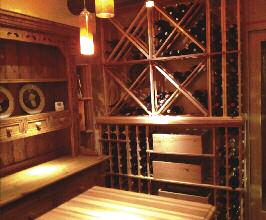



 THIN IS IN
THIN IS IN PENNY WISE
PENNY WISE BEACH BRAG
BEACH BRAG WRAP PARTY
WRAP PARTY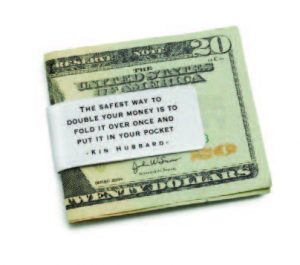













 “A homeowner can create an effective mesh network with a couple of wifi-enabled thermostats and a handful of plug-in devices that control table lamps,” says Andre Conway, an industry consultant who works with commercial and residential security clients in New Jersey, Pennsylvania and New York. “The beauty of this technology is that the more devices you add, the better the mesh becomes and the smarter your home can be.”
“A homeowner can create an effective mesh network with a couple of wifi-enabled thermostats and a handful of plug-in devices that control table lamps,” says Andre Conway, an industry consultant who works with commercial and residential security clients in New Jersey, Pennsylvania and New York. “The beauty of this technology is that the more devices you add, the better the mesh becomes and the smarter your home can be.”










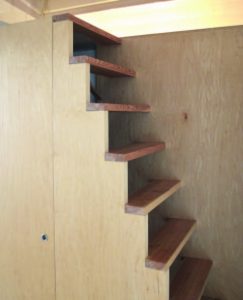




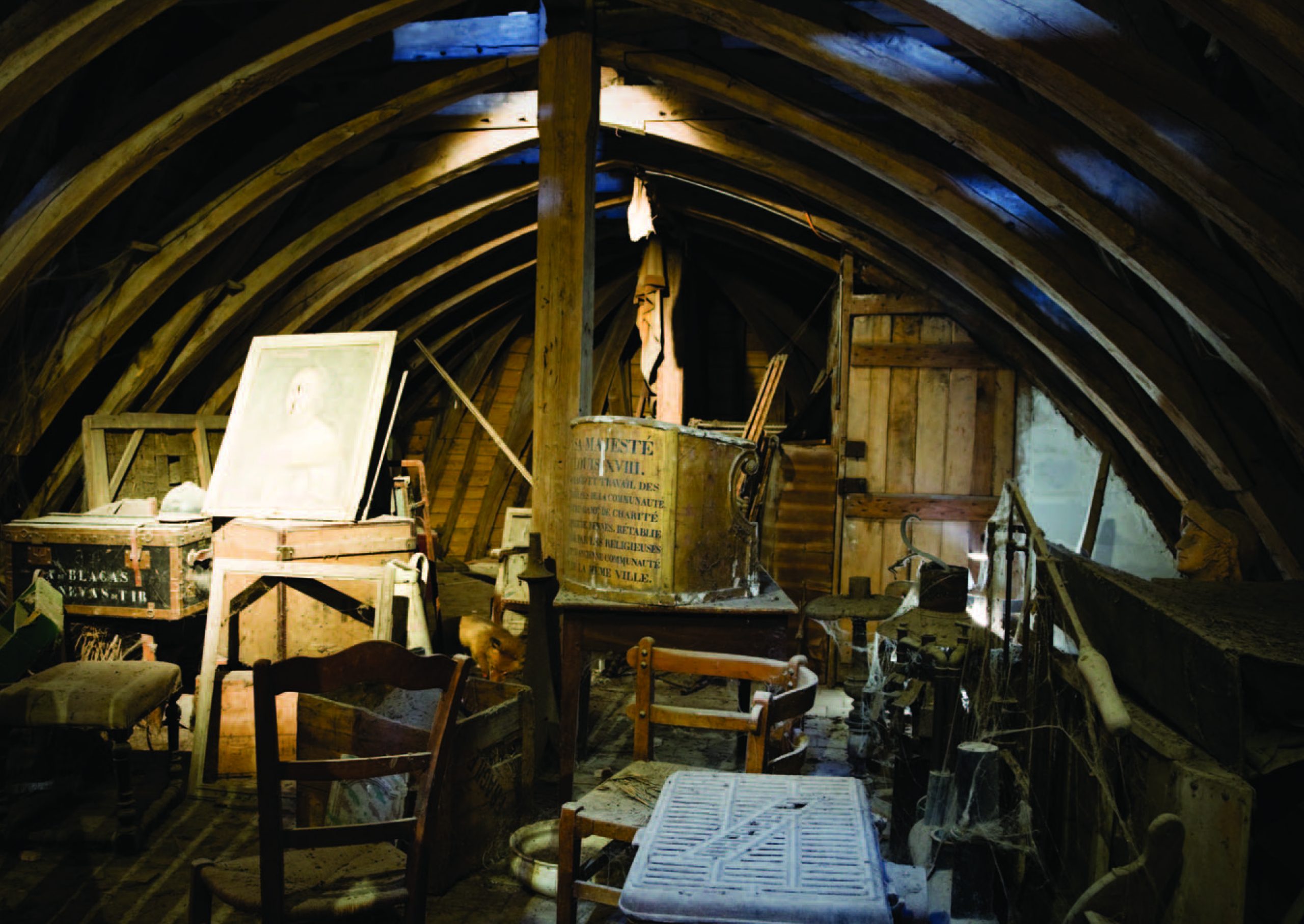
 Tom Corvo, owner of Shore Grow Hydro, a three-year-old hydro-ponics retail store in Ocean, says there are many consider-ations that determine what sort of home-growing unit to purchase: Do you have the space, time Shore Grow Hydro and budget? Generally the lights are the most expensive purchase. One customer spent $50,000 to set up two rooms with hydroponics. Or you could invest in a simpler set-up of a lettuce raft floating in a 2 x 4-foot tray on legs with a grow light for under $500. The store smartly offers support: the last Thursday in every month, Shore Grow runs classes—from Hydro 101 for seed starting and fruiting to more advanced 201 classes for propagation, pest control and the finer points of automation.
Tom Corvo, owner of Shore Grow Hydro, a three-year-old hydro-ponics retail store in Ocean, says there are many consider-ations that determine what sort of home-growing unit to purchase: Do you have the space, time Shore Grow Hydro and budget? Generally the lights are the most expensive purchase. One customer spent $50,000 to set up two rooms with hydroponics. Or you could invest in a simpler set-up of a lettuce raft floating in a 2 x 4-foot tray on legs with a grow light for under $500. The store smartly offers support: the last Thursday in every month, Shore Grow runs classes—from Hydro 101 for seed starting and fruiting to more advanced 201 classes for propagation, pest control and the finer points of automation. On the opposite coast, there’s California-based Hamama, a micro-green growing system that pops up on my Facebook feed every day. The ads of this e-commerce hydroponics company are appealing and tempting. What intrigues me is the promise of healthful microgreens that grow quickly, easily and don’t take up a lot of space or energy—as well as no need for a water pump or filter. (So technically is this hydroponic?) Better yet, the company’s “starter kit” doesn’t cost a lot of lettuce: $35 plus free shipping. Costs can mount if you go all-in and purchase a “grow shelf” that accommodates six grow trays. I spoke with Camille Richman at Hamama, who reports that orders have increased during the pandemic and that their top-seller is the Super Salad Mix Seed Quilt, a growing medium that contains broccoli, kale, arugula, kohlrabi, cabbage and cauliflower seeds. But the jury is out: Amazon customers either loved or hated the product—the seed strips worked for some and didn’t deliver salad for others.
On the opposite coast, there’s California-based Hamama, a micro-green growing system that pops up on my Facebook feed every day. The ads of this e-commerce hydroponics company are appealing and tempting. What intrigues me is the promise of healthful microgreens that grow quickly, easily and don’t take up a lot of space or energy—as well as no need for a water pump or filter. (So technically is this hydroponic?) Better yet, the company’s “starter kit” doesn’t cost a lot of lettuce: $35 plus free shipping. Costs can mount if you go all-in and purchase a “grow shelf” that accommodates six grow trays. I spoke with Camille Richman at Hamama, who reports that orders have increased during the pandemic and that their top-seller is the Super Salad Mix Seed Quilt, a growing medium that contains broccoli, kale, arugula, kohlrabi, cabbage and cauliflower seeds. But the jury is out: Amazon customers either loved or hated the product—the seed strips worked for some and didn’t deliver salad for others. By now, you may have surmised that I’m in favor of low-maintenance systems. I gravitate to easy-to-use and safe products. So I also gravitated to a hydroponics off-shoot called aeroponics. Aerofarms Aeroponics is a growing system that combines aeration and nutrient misting that encourages faster plant growth. Newark is home to Aerofarms, a “data-driven” indoor vertical growing farm and company that has been in the news the last few years. This New Jersey “home-grown” business enjoys several partnerships around the state, nationally and globally. The company, which claims its growing systems need 95% less water than outdoor farms, has been selling its lettuces, herbs and microgreens to restaurants ranging from Red Rooster to Momofuku, as well as retail grocery chains including Whole Foods under the brand Dream Greens. Aerofarms also professes to be 390 times more productive per square foot than traditional agriculture. Privately owned, the company enjoys financial partnerships with Goldman Sachs, IKEA and Dubai Holdings. Now Aerofarms is building the world’s largest aeroponic farm—90,000 square feet—in Abu Dhabi.
By now, you may have surmised that I’m in favor of low-maintenance systems. I gravitate to easy-to-use and safe products. So I also gravitated to a hydroponics off-shoot called aeroponics. Aerofarms Aeroponics is a growing system that combines aeration and nutrient misting that encourages faster plant growth. Newark is home to Aerofarms, a “data-driven” indoor vertical growing farm and company that has been in the news the last few years. This New Jersey “home-grown” business enjoys several partnerships around the state, nationally and globally. The company, which claims its growing systems need 95% less water than outdoor farms, has been selling its lettuces, herbs and microgreens to restaurants ranging from Red Rooster to Momofuku, as well as retail grocery chains including Whole Foods under the brand Dream Greens. Aerofarms also professes to be 390 times more productive per square foot than traditional agriculture. Privately owned, the company enjoys financial partnerships with Goldman Sachs, IKEA and Dubai Holdings. Now Aerofarms is building the world’s largest aeroponic farm—90,000 square feet—in Abu Dhabi.  says the vertical growing units—an outdoor one ($620) and an indoor version ($970) with LED grow-lights—are selling so well she can’t keep them in stock. While Tower Garden offers a seed starting kit for $29, a first farming foray might be better served with $2 plant seedlings. The indoor tower can house up to 16 microgreens and 16 full greens at one time. Campi says that the plants last up to three or four months and recommends harvesting lettuce from the outside. Her enterprising college-age son Joe has started a Tower Garden Cleaning and Set-up business to help her clients maintain their towers. As a multi-tasker with a half-dozen projects in the works, I don’t want to think about upkeep. So perhaps Joe’s $120 maintenance fee per season for one indoor model, though pricy, could be worth it.
says the vertical growing units—an outdoor one ($620) and an indoor version ($970) with LED grow-lights—are selling so well she can’t keep them in stock. While Tower Garden offers a seed starting kit for $29, a first farming foray might be better served with $2 plant seedlings. The indoor tower can house up to 16 microgreens and 16 full greens at one time. Campi says that the plants last up to three or four months and recommends harvesting lettuce from the outside. Her enterprising college-age son Joe has started a Tower Garden Cleaning and Set-up business to help her clients maintain their towers. As a multi-tasker with a half-dozen projects in the works, I don’t want to think about upkeep. So perhaps Joe’s $120 maintenance fee per season for one indoor model, though pricy, could be worth it. 

 His thumbprints are on projects ranging from a rambling rose garden in Bellingham, Washington and a rose garden and propagation program on the Frank Lloyd Wright-designed Southern Florida College campus, to a vast heritage rose collection in Chambersville, Texas and a children’s plant workshop a bit closer to home, in Harlem.
His thumbprints are on projects ranging from a rambling rose garden in Bellingham, Washington and a rose garden and propagation program on the Frank Lloyd Wright-designed Southern Florida College campus, to a vast heritage rose collection in Chambersville, Texas and a children’s plant workshop a bit closer to home, in Harlem. With the influx of genetically engineered roses, Scanniello’s approach to heritage roses is almost like a spiritual calling. “Rosarians have a responsibility to preserve species roses and their oldest known hybrids,” he explains. “Modern-day rose hybridizers are turning to these oldest roses for the key to creating healthy roses. Without the preservation of species and old roses, a valuable genetic link to disease resistance will be lost.”
With the influx of genetically engineered roses, Scanniello’s approach to heritage roses is almost like a spiritual calling. “Rosarians have a responsibility to preserve species roses and their oldest known hybrids,” he explains. “Modern-day rose hybridizers are turning to these oldest roses for the key to creating healthy roses. Without the preservation of species and old roses, a valuable genetic link to disease resistance will be lost.” The author of seven books on roses, Scanniello approaches his subject like a detective. His mission to find and preserve roses spans the world and is a bit of a race against time, as uneducated gardeners are planting newer breeds and eschewing the older roses. It is a mission that often leads him to some unexpected places. One source, for example, was discovered in East Germany, behind the former Iron Curtain. Sangerhausen Rose Garden—a time-warp, hermetically-sealed garden—had remained untouched from before World War II, offering healthy roses that had escaped the heavy-handed adulterations of modern-day hybridizers. Another fruitful, if macabre, source of heritage roses are old cemeteries. There, like ghosts surrounding old, unkempt graves, grow some of the best examples of heritage roses from another era.
The author of seven books on roses, Scanniello approaches his subject like a detective. His mission to find and preserve roses spans the world and is a bit of a race against time, as uneducated gardeners are planting newer breeds and eschewing the older roses. It is a mission that often leads him to some unexpected places. One source, for example, was discovered in East Germany, behind the former Iron Curtain. Sangerhausen Rose Garden—a time-warp, hermetically-sealed garden—had remained untouched from before World War II, offering healthy roses that had escaped the heavy-handed adulterations of modern-day hybridizers. Another fruitful, if macabre, source of heritage roses are old cemeteries. There, like ghosts surrounding old, unkempt graves, grow some of the best examples of heritage roses from another era. Starting your own heritage rose garden, Scanniello insists, is not as daunting a task as one might imagine. For starters, he recommends planting a heritage rose in a 24-inch pot or wooden barrel, placed in a location that gets plenty of sun. It should be watered either in the early morning or late afternoon, near the mid-day sun. He encourages New Jersey gardeners to plant roses hailing from New Jersey, such as a pink Jersey Beauty, which was created in South Orange, or South Orange Perfection, or New Dawn, a continually blooming genetic off-shoot of the Dr. van Fleet rose. Other good strains of roses that will bloom continually are the Parade or Dream Girl, bred by Martin Jacobus in Ridgefield in the 1950s and ’60s.
Starting your own heritage rose garden, Scanniello insists, is not as daunting a task as one might imagine. For starters, he recommends planting a heritage rose in a 24-inch pot or wooden barrel, placed in a location that gets plenty of sun. It should be watered either in the early morning or late afternoon, near the mid-day sun. He encourages New Jersey gardeners to plant roses hailing from New Jersey, such as a pink Jersey Beauty, which was created in South Orange, or South Orange Perfection, or New Dawn, a continually blooming genetic off-shoot of the Dr. van Fleet rose. Other good strains of roses that will bloom continually are the Parade or Dream Girl, bred by Martin Jacobus in Ridgefield in the 1950s and ’60s.






 So what’s my magic formula for buying smart? As I look back on my career and experiences as an art historian, dealer, appraiser and collector, I think it’s a little bit of patience, a fair amount of scholarship, and being in the right place at the right time. I offer as evidence four war stories…
So what’s my magic formula for buying smart? As I look back on my career and experiences as an art historian, dealer, appraiser and collector, I think it’s a little bit of patience, a fair amount of scholarship, and being in the right place at the right time. I offer as evidence four war stories…
 ART BUYER’S CHECKLIST
ART BUYER’S CHECKLIST

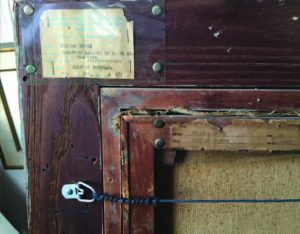 STEALING ONE FOR A C-NOTE
STEALING ONE FOR A C-NOTE QUICK! WHICH WOULD YOU PICK?
QUICK! WHICH WOULD YOU PICK? The Musicians painting on the left is what I would refer to as a decorative piece: pleasing to look at, easy to interpret and utilizing only a moderate degree of skill. It’s not a deep image, but it’s light, dynamic and charming, albeit somewhat superficial. The signature is completely indiscernible (this could be intentional) so I cannot look up the artist’s bio or see any type of track record. A closer look indicates materials that would not be considered high-quality or archival (stretcher wood, frame, canvas). In spite of this, it’s an enjoyable decoration, but that is its only value.
The Musicians painting on the left is what I would refer to as a decorative piece: pleasing to look at, easy to interpret and utilizing only a moderate degree of skill. It’s not a deep image, but it’s light, dynamic and charming, albeit somewhat superficial. The signature is completely indiscernible (this could be intentional) so I cannot look up the artist’s bio or see any type of track record. A closer look indicates materials that would not be considered high-quality or archival (stretcher wood, frame, canvas). In spite of this, it’s an enjoyable decoration, but that is its only value. This was a great find, and a team effort that turned out to be very profitable. To me, as an art historian, however, the more important piece was that through luck and persistence, I was able to re-open and re-invent an artist whose life’s work was relegated to a suburban garage. Wow. This amazing journey has made me now want to shed more light on other artists from the first quarter of the 20th century. It also got me more interested in illustrations. It was a beautiful circle.
This was a great find, and a team effort that turned out to be very profitable. To me, as an art historian, however, the more important piece was that through luck and persistence, I was able to re-open and re-invent an artist whose life’s work was relegated to a suburban garage. Wow. This amazing journey has made me now want to shed more light on other artists from the first quarter of the 20th century. It also got me more interested in illustrations. It was a beautiful circle.
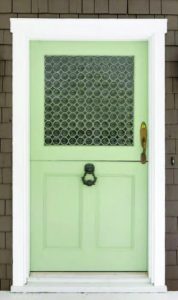
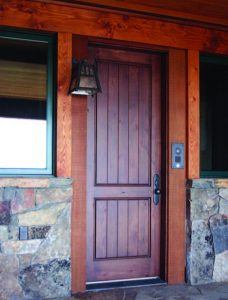



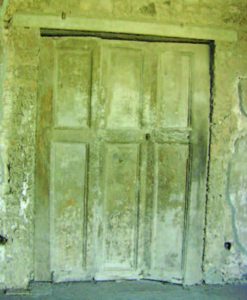


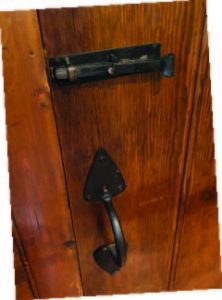
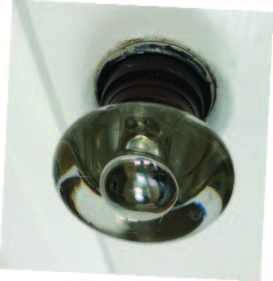


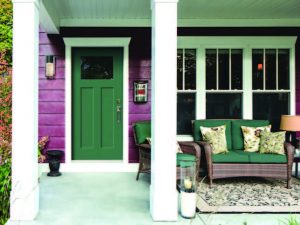

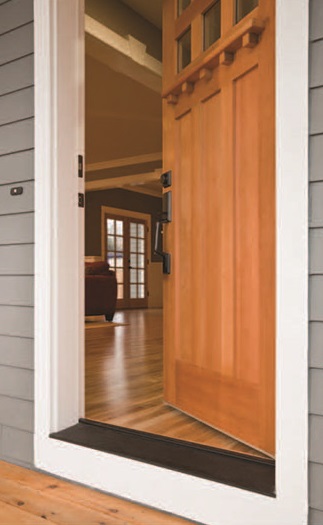
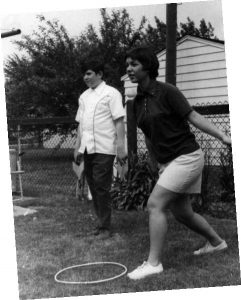


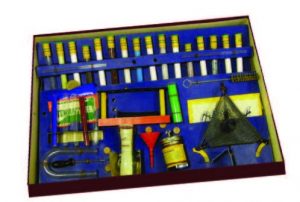


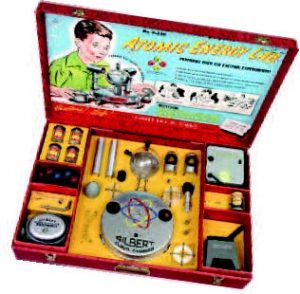

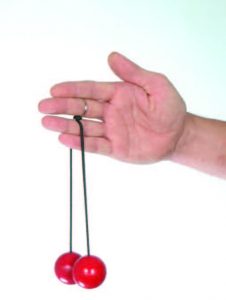


 A MIGHTY WIND
A MIGHTY WIND










 AN APPETITE FOR HISTORY
AN APPETITE FOR HISTORY Anything having to do with the foundation or structural integrity of an old home is a potential deal-breaker, adds Carrino. “Along with a roof that’s in poor condition, those are things that can suck your budget dry before you even begin your renovation.”
Anything having to do with the foundation or structural integrity of an old home is a potential deal-breaker, adds Carrino. “Along with a roof that’s in poor condition, those are things that can suck your budget dry before you even begin your renovation.” “I hope towns realize that they do not look good and put a stop to it.”
“I hope towns realize that they do not look good and put a stop to it.”





 INSIDE OUT
INSIDE OUT


 WHAT IS IT?
WHAT IS IT?

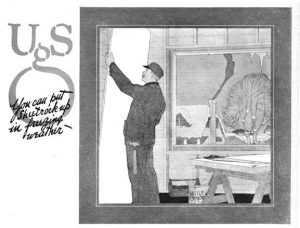








 “From what we first imagined, we achieved 85 to 90 percent of our initial vision,” James estimates, adding that although the goal of a designer is to marry form and function, sometimes one must be sacrificed for the other. “That’s how I come up with 85 to 90. We chose some details that are aesthetically pleasing but not very functional. However, in terms of what we wanted the house to be, we achieved.”
“From what we first imagined, we achieved 85 to 90 percent of our initial vision,” James estimates, adding that although the goal of a designer is to marry form and function, sometimes one must be sacrificed for the other. “That’s how I come up with 85 to 90. We chose some details that are aesthetically pleasing but not very functional. However, in terms of what we wanted the house to be, we achieved.”

 Brining meat in a mixture of water, salt and perhaps spices and herbs, dramatically impacts the flavor profile. There are many rules about brining, but a simplistic rule is 1 hour of brining for every 2 pounds of product.
Brining meat in a mixture of water, salt and perhaps spices and herbs, dramatically impacts the flavor profile. There are many rules about brining, but a simplistic rule is 1 hour of brining for every 2 pounds of product. For those who have medical concerns about sodium, there is another option. You can salt your meat prior to smoking. A mix of salt and pepper, herbs, sugar and honey can be rubbed over your food anywhere from 2 to 24 hours beforehand (which needs to be removed before it goes in the smoker). The idea is to draw out the moisture without the BP bump. Whichever method you prefer, the purpose of salting is the same: less moisture actually allows for a better absorption of the smoky flavor.
For those who have medical concerns about sodium, there is another option. You can salt your meat prior to smoking. A mix of salt and pepper, herbs, sugar and honey can be rubbed over your food anywhere from 2 to 24 hours beforehand (which needs to be removed before it goes in the smoker). The idea is to draw out the moisture without the BP bump. Whichever method you prefer, the purpose of salting is the same: less moisture actually allows for a better absorption of the smoky flavor.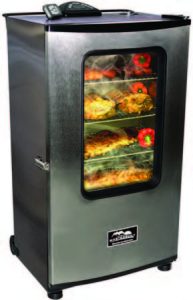 KNOW YOUR SMOKER
KNOW YOUR SMOKER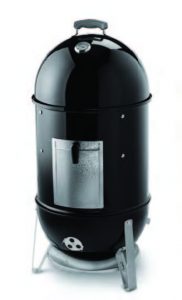 Kettle smokers (aka hinged-lid cookers) are the ones you often encounter at home improvement and hardware stores. Weber makes a popular model I see everywhere. This type of smoker (far right) also can double as an oven for larger pieces of meat or poultry. This is your basic charcoal- or gas- fired smoker that uses wood chips to create the smoke. Soaking your chips, or a portion of your chips, prior to burning will produce a longer, slower burn time—a critical component to backyard smoking success. In this variety of smoker, consider placing a water tray alongside your meal to prevent your food from drying out.
Kettle smokers (aka hinged-lid cookers) are the ones you often encounter at home improvement and hardware stores. Weber makes a popular model I see everywhere. This type of smoker (far right) also can double as an oven for larger pieces of meat or poultry. This is your basic charcoal- or gas- fired smoker that uses wood chips to create the smoke. Soaking your chips, or a portion of your chips, prior to burning will produce a longer, slower burn time—a critical component to backyard smoking success. In this variety of smoker, consider placing a water tray alongside your meal to prevent your food from drying out.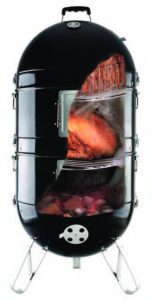 One caveat is that kettle smokers are not good for guys I call “Larry the Lifter”—who can’t resist taking periodic peeks at the meat. Every time you open the lid, all the smoke that’s supposed to go into the food goes into the air. It adds about 10 minutes per lift to your cook time.
One caveat is that kettle smokers are not good for guys I call “Larry the Lifter”—who can’t resist taking periodic peeks at the meat. Every time you open the lid, all the smoke that’s supposed to go into the food goes into the air. It adds about 10 minutes per lift to your cook time. For those who need to get their smoke on 12 months a year, gas smokers are the way to go. They offer hot and cold smoking with racking and hanging capacity. Easy to move and carry, they can be placed anywhere in the backyard, as long as they are far enough away from objects that you don’t want to sacrifice to the barbecue gods. Make sure there is plenty of ventilation around all sides of the smoker. The propane unit from Camp Chef (above) is a popular example of a gas smoker. Its temperature gauge enables you to switch between hot or cold smoking by dialing in the right temperature. Another benefit is not having to worry about overcooking or drying out the food, as you can control this like an oven.
For those who need to get their smoke on 12 months a year, gas smokers are the way to go. They offer hot and cold smoking with racking and hanging capacity. Easy to move and carry, they can be placed anywhere in the backyard, as long as they are far enough away from objects that you don’t want to sacrifice to the barbecue gods. Make sure there is plenty of ventilation around all sides of the smoker. The propane unit from Camp Chef (above) is a popular example of a gas smoker. Its temperature gauge enables you to switch between hot or cold smoking by dialing in the right temperature. Another benefit is not having to worry about overcooking or drying out the food, as you can control this like an oven. Finally, if you have doctored up your smoky creation with a fiery rub and added some chilis to the wood, the great fill here is one of those fabulous sweet German Rieslings. Sugar puts out the fire, alcohol does not—it makes it worse—so do not grab that high alcohol content wine you think will pair power with power. Grab the good stuff from St. Urbans Hof or JJ Prum.
Finally, if you have doctored up your smoky creation with a fiery rub and added some chilis to the wood, the great fill here is one of those fabulous sweet German Rieslings. Sugar puts out the fire, alcohol does not—it makes it worse—so do not grab that high alcohol content wine you think will pair power with power. Grab the good stuff from St. Urbans Hof or JJ Prum. 
 BEER ME
BEER ME




 Gadget Inspector
Gadget Inspector And it doesn’t stop there. Showers are now programmable. The RainBrain by Hansgrohe ($4,750) (right) takes total shower jet control to a whole new level, creating the equivalent of a stand-up body massage. How about a laser razor? Skarp makes a slick, minimalistic shaver that emits a powerful light to cut off your facial bristles. Its recent launch on Indiegogo (a crowdfunder for startups), raised almost $500,000 and is targeted to be available this year at $289. FitBit devotees will enjoy the Aria scale, which can be synched to a smartphone to record not only poundage, but also body fat percentage, body mass index (BMI), heart rate, and even let you know about the day’s weather forecast
And it doesn’t stop there. Showers are now programmable. The RainBrain by Hansgrohe ($4,750) (right) takes total shower jet control to a whole new level, creating the equivalent of a stand-up body massage. How about a laser razor? Skarp makes a slick, minimalistic shaver that emits a powerful light to cut off your facial bristles. Its recent launch on Indiegogo (a crowdfunder for startups), raised almost $500,000 and is targeted to be available this year at $289. FitBit devotees will enjoy the Aria scale, which can be synched to a smartphone to record not only poundage, but also body fat percentage, body mass index (BMI), heart rate, and even let you know about the day’s weather forecast n addition to the various technological bells and whistles they offer, manufacturers are also looking at the safety component of bathroom design. One of Jay Leno’s tried-and-true jokes is about how more people die each year in bathroom falls than in plane crashes (the punch line is, “Yeah, but when you fall off the toilet you’re not falling 30,000 feet!”). Still, it’s no laughing matter. According to the Centers for Disease Control and Prevention, nearly a quarter-million people over age 15 visit the ER annually as a result of a bathroom injury; 14 percent require hospitalization. Two-thirds of bathroom injuries are sustained in or near a bathtub or shower. The injury rate for women is 72 percent higher than for men. And, interestingly, you’re more than four times likelier to get hurt getting out of a tub or shower than getting in. Even if you’re not springing for the big bathroom reno, its worth doing a quick safety assessment. Look for poorly fitting shower curtains, slick tile floors, soapy tub or shower beds, antiquated or improperly installed glass shower doors, area rugs without non-slip backing, and space heaters. These are items worth an immediate upgrade.
n addition to the various technological bells and whistles they offer, manufacturers are also looking at the safety component of bathroom design. One of Jay Leno’s tried-and-true jokes is about how more people die each year in bathroom falls than in plane crashes (the punch line is, “Yeah, but when you fall off the toilet you’re not falling 30,000 feet!”). Still, it’s no laughing matter. According to the Centers for Disease Control and Prevention, nearly a quarter-million people over age 15 visit the ER annually as a result of a bathroom injury; 14 percent require hospitalization. Two-thirds of bathroom injuries are sustained in or near a bathtub or shower. The injury rate for women is 72 percent higher than for men. And, interestingly, you’re more than four times likelier to get hurt getting out of a tub or shower than getting in. Even if you’re not springing for the big bathroom reno, its worth doing a quick safety assessment. Look for poorly fitting shower curtains, slick tile floors, soapy tub or shower beds, antiquated or improperly installed glass shower doors, area rugs without non-slip backing, and space heaters. These are items worth an immediate upgrade. A LITTLE BUDGET CONSCIOUS
A LITTLE BUDGET CONSCIOUS 